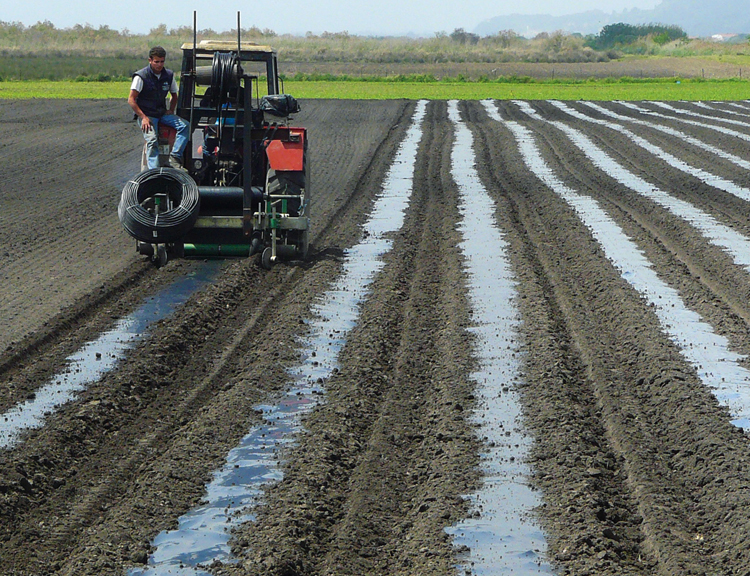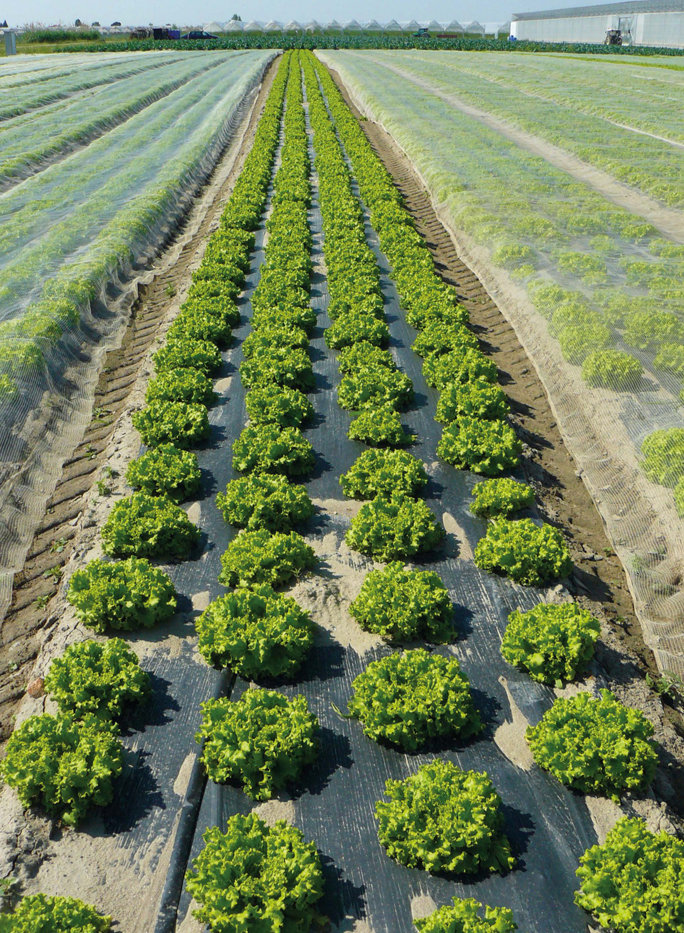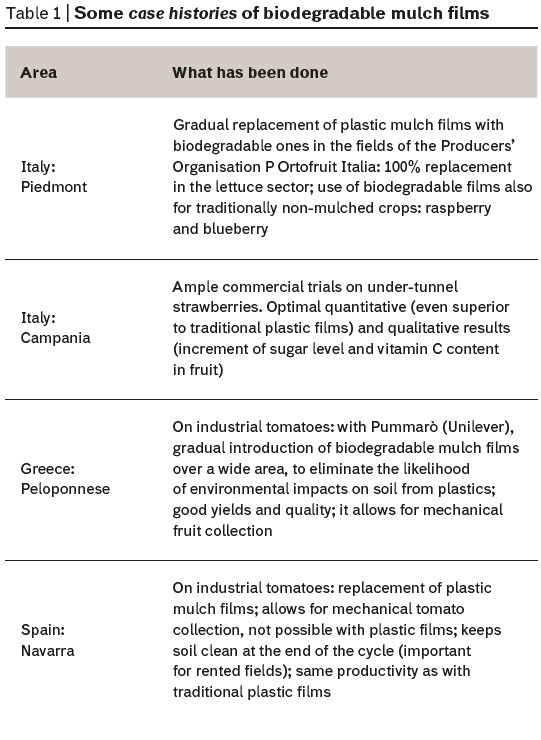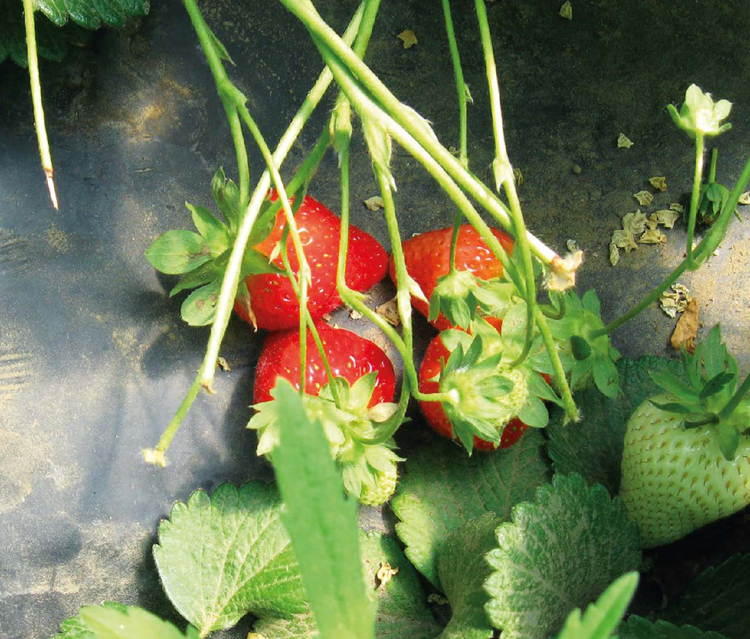Plastic Films in Agriculture: Lights and Shadows
In 2013, demand for plastic films in agriculture at a global level amounted to about 4 million tons, mainly in Asia (roughly 70%) followed by Europe (16%). Out of the 510,000 tons of agricultural films used in Europe, 40% are concentrated in Southern countries (Spain and Italy) for use in horticulture (greenhouse covers and mulching). Mulching is a widely used agricultural technique, mainly for growing vegetables, as it presents undoubted advantages such as the containment of weeds, a reduced use of herbicides and an improved quality of the product, a reduced amount of irrigating water, etc.

Plastic mulch films are mainly made out of low density polyethylene (LDPE) and 80,000 tons are estimated to be used in Europe. Their average useful life on the field varies in relation to the crop cycle: from a few months (lettuce) to a couple of years (strawberries).
The film, at the end of the cultivation period, needs to be removed from the field and properly disposed of according to the general rules contained in European directives dealing with waste management (directives 99/31 EC, 2000/76 EC, directive 2008/98/EC). Some countries like France, Germany, the UK and Norway have organized voluntary schemes of collection and disposal of this specific waste; others like Austria, Belgium, Germany and Denmark have banned the disposal of plastic films in landfills.
However, the flows of plastics that enter and exit the agricultural sector in Europe continue to diverge. According to the European project LabelAgriWaste, in Italy and Spain only up to 50% of used plastic films are recovered; out of this 50%, about half are sent to landfills. The most common types of illegal dumping of agriplastics include: burning on the field, dumping by the side of cultivated fields, in illegal dumpsites or alongside waterways, and burying in the soil.
 This has to do with the timing and high costs of disposal for this kind of waste, due to the “rapid rotation” of its usage and it being very dirty (it is estimated that impurities in old films – soil or crop residues – represent up to 80% of the total weight of the material). Unfortunately, once again the consequences of this gap are borne by the environment. China, the biggest mulching user (20 million hectares) suffers many problems connected with the improper disposal of these films. Fragments of non-collected plastics have contaminated wide agricultural surfaces and it is estimated that the presence of these fragments in the most superficial strata of the soil have caused a reduction in production of about 20%. We can certainly state that “the plastics technology defined as ‘white revolution’ in some areas of the world has completely turned into ‘white pollution’”.,
This has to do with the timing and high costs of disposal for this kind of waste, due to the “rapid rotation” of its usage and it being very dirty (it is estimated that impurities in old films – soil or crop residues – represent up to 80% of the total weight of the material). Unfortunately, once again the consequences of this gap are borne by the environment. China, the biggest mulching user (20 million hectares) suffers many problems connected with the improper disposal of these films. Fragments of non-collected plastics have contaminated wide agricultural surfaces and it is estimated that the presence of these fragments in the most superficial strata of the soil have caused a reduction in production of about 20%. We can certainly state that “the plastics technology defined as ‘white revolution’ in some areas of the world has completely turned into ‘white pollution’”.,
Biodegradable Materials in Agriculture: a New Model at the Service of Farmers and the Environment
In this scenario the importance of using biodegradable materials in agriculture is evident. These materials can stay in the environment where they end their cycle in optimal conditions without causing damaging effects.
In particular, biodegradable mulch films allow us to tackle a series of problems in a very efficient way: they do not need to be removed from the soil, where after their usage they are biodegraded by soil microorganisms. This helps us save on costs and timing of collection and disposal and make differentiated agriplastics collection cleaner, thus eliminating very dirty and non-profitable materials in the recycling phase.
Definitions
Biodegradation: degrading process caused by biological activity, especially enzyme action, which leads to a significant change in the material’s chemical structure.
Biodegradable: organic substance that can be decomposed by the activity of living organisms. If this biodegradation is completed, it leads to the total conversion of the organic substance into non-organic molecules, such as carbon dioxide, water, methane (which are beneficial to the environment). In the definition of biodegradable, factors like the environment where biodegradation takes place and the temporal horizon need to be included. In other words, it is necessary to define in which conditions and in which time frame biodegradation is expected to take place. Without the definition of these elements the term biodegradable becomes vague and not very useful, as virtually every organic substance is biodegradable if we do not specify the time frame.
A 2009 Italian study has carefully evaluated the environmental implications of moving from plastic mulch films to biodegradable ones, analyzing the cycle of products with an LCA approach (life cycle assessment). In relation to CO2 emissions, the use of biodegradable mulch films allows for a saving of 500 kg of CO2 equivalent per mulched hectare (considering that 60% of a hectare is covered in film).
In the last few years the usage of biodegradable mulch films has gradually increased. These materials have the same performance, management, agronomical and production characteristics as plastic films. The crops that benefit the most from biodegradable mulch films are those that have a medium-short agricultural cycle: vegetables and fruit such as courgettes, lettuce, tomatoes, pepper, melon and watermelon. As shown in Table 1, many companies such as Unilever and many territories in Italy and other countries have benefited from this shift.

If biodegradable mulch films for horticultural produce are a growing reality, there are still new possibilities to be explored for these materials: mulching of deferred high-income crops such as vine, silage covers, nets, covers for round bales, packaging for fruit and vegetables. These are only some of the many possible uses that can be explored in the near future, thanks to ever more complex products with better performance indicators.

Much has been done in terms of research and development. However, some important steps have also been taken at a legislative level, an example being the recognition of biodegradable products as instruments of environmental sustainability in agriculture. In the 2007-2013 CAP, films for biodegradable mulching have been included in the environmental measures of the Common Market Organization (CMO) for horticultural crops in the most important European countries for fruit and vegetable production (Italy, France and Spain).
The new CAP for 2014-2020, with its strong environmental and innovation-promoting orientation, will certainly provide important instruments of support to biodegradable plastics. It is hoped that in a few years the agricultural landscape will be less populated by those elements that are not only visually disturbing, but also degrading and polluting, and that have little to do with the role of food production and preservation of territory that should characterize agricultural activity.
Info

